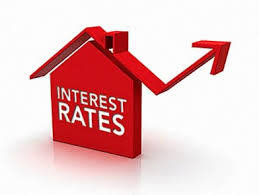Interest rates are about to rise again

The Federal Reserve is poised to raise interest rates for the second time this year.
The economy has started to roar: The unemployment rate is 3.8%, tied for the lowest since 1969. Wages are rising faster. And inflation has finally risen to the level the Fed considers healthy.
Investors are almost certain that the Fed will raise rates on Wednesday, at the end of a two-day policy meeting. Policy makers telegraphed in May that they would do just that if the economy kept performing as expected.
The federal funds rate, which helps determine rates for mortgages, credit cards and other borrowing, stands at a range of 1.5% to 1.75%. The Fed is expected to bump it up by a quarter of a percentage point.
Here’s what to watch for.
Hearing from Powell
Fed Chairman Jerome Powell will hold a news conference after the decision. You can bet that reporters will ask for his views on escalating trade tensions, and what they might mean for the economy and monetary policy.
Trade tensions are even higher after President Trump disavowed a joint statement at the Group of 7 meeting over the weekend in Canada. After he refused to sign, he insulted Canadian Prime Minister Justin Trudeau in a series of tweets.
The Trump administration has also imposed steel and aluminum tariffs on Canada, Mexico and the European Union, all US allies. Talks to renegotiate NAFTA are deadlocked. And the White House is planning steep tariffs on Chinese goods.
Economists have warned these trade disputes could dampen global economic growth. But Powell has said the possibility of a tit-for-tat trade war would not affect the Fed’s plans to raise rates this year and next. At least not yet.
Related: Trade wars are scary. Why isn’t Wall Street freaking out?
What happens next
A rate hike on Wednesday seems certain. But policy makers are closely divided on whether to raise rates a total of three times this year or four.
So far, the official plan is for three. But the Fed has hinted at a more aggressive pace in the coming years to keep the economy from overheating. In March, it shifted its plan for 2019 and called for three hikes instead of two.
Fed officials will release updated economic forecasts on Wednesday. Those could hint at plans for acceleration. But Wall Street isn’t betting on it.
“Following the June hike, we continue to expect only one additional hike this year before the Fed pauses at its December meeting,” said Ellen Zentner, a Morgan Stanley economist.
Related: It’s not just you: Everything really is getting more expensive
Inflation overshoot?
The Fed has been trying to strike a balance: It wants to raise interest rates steadily to keep the economy from overheating, but raising rates too quickly could help start a recession.
One way the Fed judges how quickly to act is by watching inflation. After years of stubbornly low inflation, the Fed’s preferred measure finally reached the Fed’s target of 2% in March and April.
Fed officials have made clear they won’t overreact if inflation overshoots that target. Some of them signaled last month that they would be more than comfortable if inflation were “modestly” above 2% “for a time,” according to minutes of their May meeting.
So far, the Fed hasn’t defined how much of an overshoot in inflation it would tolerate — or for how long. Policy makers could provide further clues this week.




